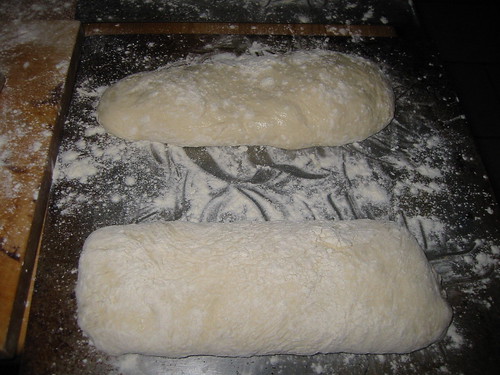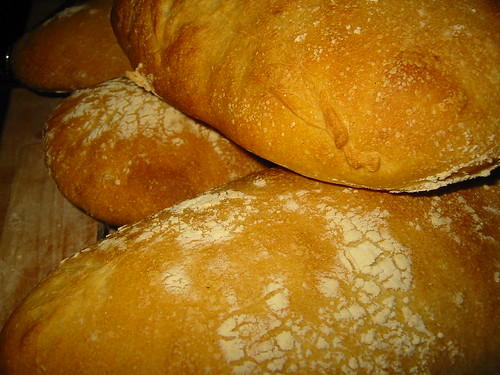
I'd like to start by saying all bread is easy to make. All bread is composed of nearly the same ingredients and it is primarily the proportions of those ingredients and the method of treating them that produces the magnificent range of this essential foodstuff across the world.
So, as we learnt at school, bread is a combination of flour, water, salt and yeast and is still bread even if you leave the last two ingredients out. You can add fats, flavourings, non-wheat flours like corn or buckwheat (yeuchh), extra fruits, vegetable or nuts but none of these are essential. For a well risen yeasted bread the flour should have a good gluten content, for flat breads this is not so important and these differences in flour across the world have informed the style of bread made locally.
Ciabatta is an Italian invention, using an overnight yeasted preparation called a biga which is made up the next day into a very soft, almost sloppy dough. The biga allows a small amount of yeast to multiply itself up to a sufficient quantity to raise the loaves, the overnight wait produces a slightly fermented flavour which adds to the character of the bread. Olive oil is added to enrich the dough. The finished bread is light and chewy with a good crust and an open texture.
Italian bread uses a mediumly high protein/gluten flour which allows big bubbles to expand in the dough without bursting and subsequent collapse while retaining a tenderness to the bite so for best results try to get hold of some real Italian flour, the extra strong sold for bread machines will produce a tough loaf.
Because it is such a wet dough it can be difficult to knead by hand. Some people will work it on a board, my partner has a wonderful open air stretching technique that pulls the dough from hand to hand without ever allowing it to flow to the table, I used a professional bread mixing machine because I could.
After the dough is kneaded it must be allowed to rise for a while, traditionally described until it has doubled or trebled in size which may take an hour or may take four hours depending on other variables like the heat of the kitchen. Then, and it is almost a pouring action, carefully tip your dough onto a well floured board and with a pastry scraper or knife divide it up in to loaves, which are gently formed into the slipper shapes of the finished bread. This stage is important because the dough has a delicate structure, full of air, and this needs to be preserved.
After a further proving (see above) the loaves are baked in a very hot oven for about 20 minutes until brown and lovely.

No comments:
Post a Comment